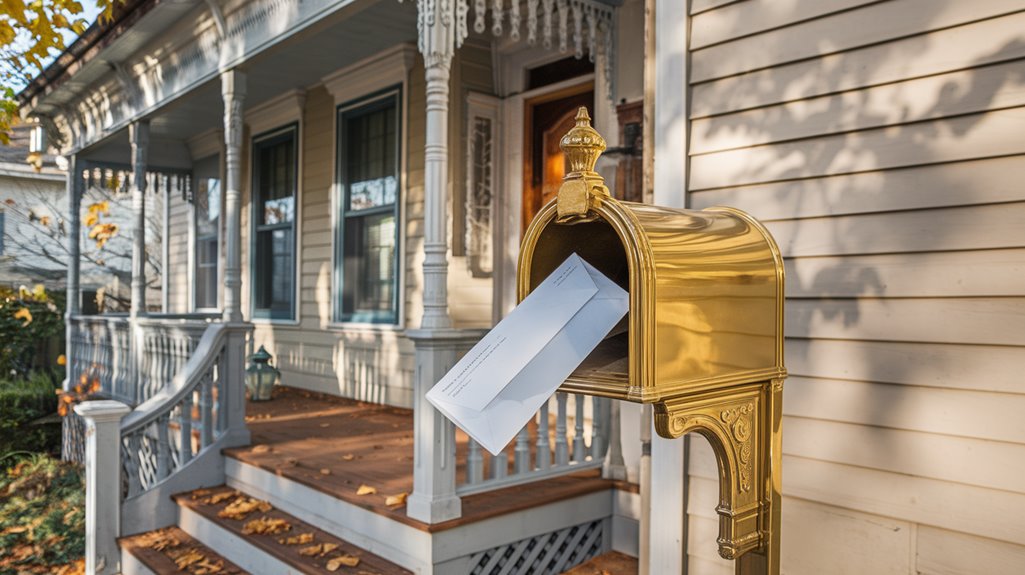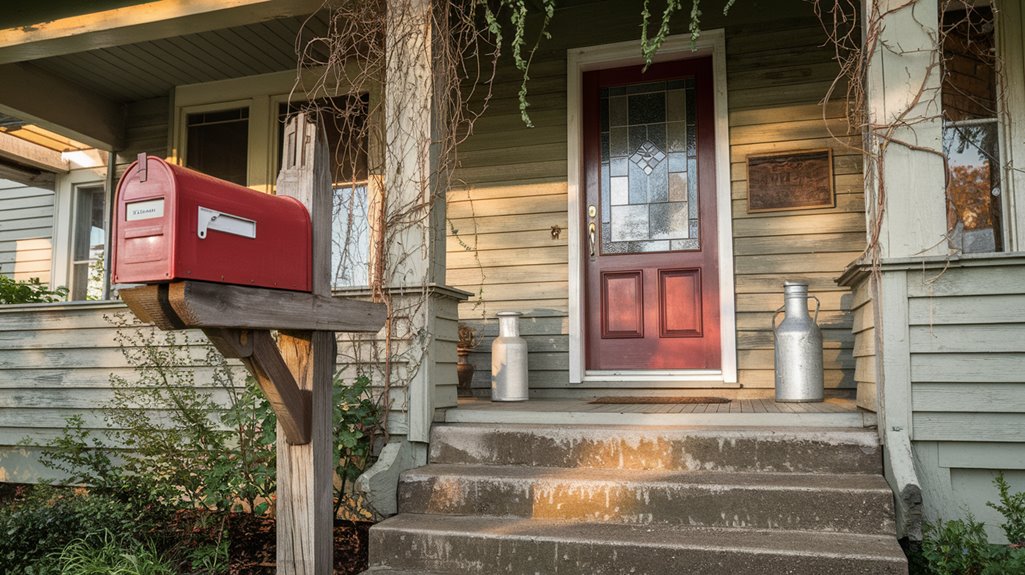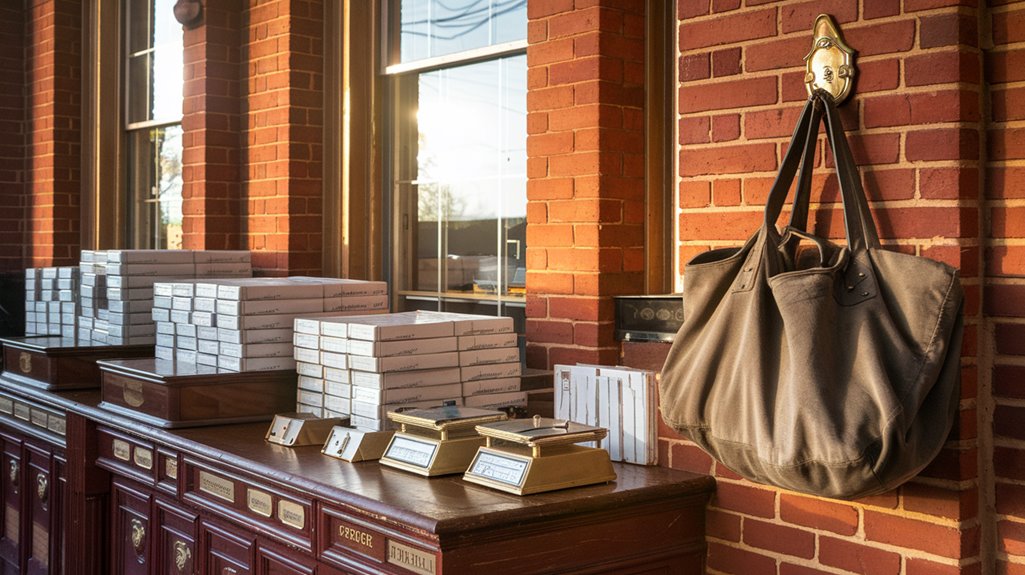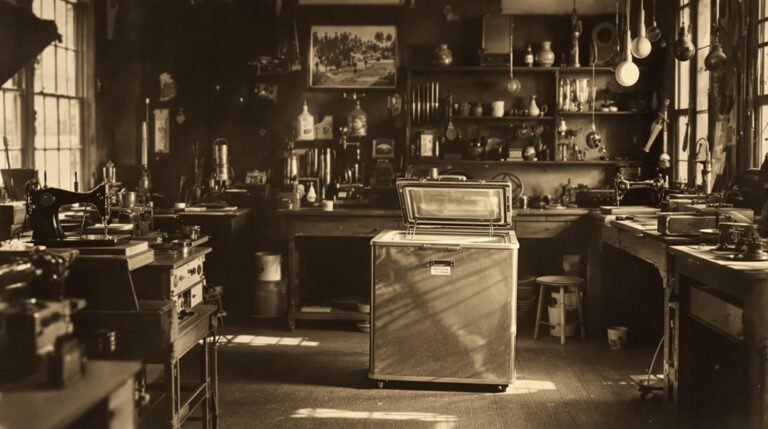Home Mail Delivery Became Mandatory in the US in 1923
You might find it interesting that while Americans were buying their first crystal radio sets in 1923, they were also hanging up their first mandatory mailboxes. Before this pivotal change, you'd have needed to trek to your local post office to collect letters and packages – a routine that could eat up hours of your day. If you're wondering what sparked this nationwide shift in mail delivery, there's quite a story behind the convenience you've come to expect at your doorstep.
The Path to Mandatory Home Mail Delivery

While mail delivery in American cities began as a door-to-door service, growing inefficiencies prompted major changes in the early 20th century. You might be surprised to learn that mail carriers once spent about 1.5 hours each day just waiting at doorsteps for recipients to collect their mail. Prior to home delivery, people endured full day trips to post offices to retrieve their mail. Mail carriers frequently made multiple daily deliveries until cost-cutting measures were implemented in 1923.
The historical significance of mandatory home mail delivery can't be understated. In 1863, Congress first approved free home delivery in cities that met specific population or postal revenue requirements.
By 1923, recognizing the need for greater efficiency, the Post Office Department required all new homes to have a mailbox or mail slot. This standardization revolutionized mail delivery by eliminating wait times, ensuring cleanliness, and creating a more consistent service.
The change laid the groundwork for future postal innovations and cost-saving measures.
Early Mail Collection Before 1923
Before the 1923 mandate for home mailboxes, mail collection in America followed a fascinating evolution from its colonial roots. You'd find your mail at taverns in colonial times, which served as early post offices.
The mailbox evolution began in the 1850s when cities installed lamppost letter boxes and private letter boxes for more convenient collection. House-to-house delivery did not exist in the early years of the postal system, requiring citizens to collect their mail from central locations.
Collection challenges were numerous during this period. You couldn't always count on security since early boxes often lacked locks, making them vulnerable to theft.
The introduction of the Doremus Box in 1889 helped address these concerns with its secure top lid design. By the 1890s, you'd see larger free-standing package boxes appearing nationwide, and by 1900, free home delivery reached most of the country, though the system remained inconsistent until standardization efforts took hold.
Economic Pressures Behind the Change
Since the introduction of rural delivery in 1896, the U.S. Postal Service faced mounting financial pressures that would reshape mail delivery nationwide.
You'll find that rural challenges emerged almost immediately, with delivery costs creating a staggering $17 million deficit by 1909. While souvenir postcards provided some relief, they couldn't offset the growing expenses of maintaining routes and paying carriers.
The Post Office Department recognized the potential of airplanes and began scheduled mail flights by 1921, hoping to increase efficiency and reduce costs.
The quest for financial sustainability led to significant operational changes by 1923.
You'd see the most notable change in cities, where home delivery was reduced to once per day. This adjustment came amid increasing costs and the need to streamline services.
The Post Office's struggle to balance universal service with fiscal responsibility would continue, setting a pattern that's still evident in today's postal operations.
Design Standards and Requirements
A knock at the door marked the old way of mail delivery until 1923, when the Post Office mandated mailboxes and letter slots for all households.
Before standardization, you'd find rural residents using makeshift containers like old food cans and oil drums to receive their mail, often leaving postal workers handling residue-coated containers.
The design evolution brought strict requirements for mailbox features that would benefit both carriers and residents.
You'd need a mailbox that was affordable, durable, and secure against theft. The new standards specified size requirements to accommodate various types of mail, and you'd have to include a flag or indicator for collection.
These changes helped postal workers save nearly 1.5 hours per day that they'd previously spent waiting at doors, making mail delivery more efficient and consistent.
Impact on Postal Workers and Operations

The introduction of mandatory mailboxes transformed postal operations by creating substantial benefits for both workers and the postal system.
You'll find that postal worker efficiency improved dramatically, with carriers saving about 1.5 hours daily by eliminating door-to-door deliveries and wait times.
The change enhanced operational safety, particularly in rural areas where postal workers previously faced risks during door-to-door delivery.
They no longer had to endure inclement weather or repetitive door-knocking. The standardized system also reduced physical strain and improved sanitation by eliminating makeshift mail containers.
Similar to the early days of contracted mail coaches, carriers could now complete their routes more systematically and efficiently.
The expansion of service was remarkable, with rural carriers increasing from fewer than 500 to over 32,000 postal workers by 1905.
You can see how these changes led to significant cost savings and increased productivity.
The Post Office could now handle higher mail volumes, allocate resources more effectively, and maintain predictable delivery schedules, creating a more streamlined and stable operation overall.
Legislative Actions and Implementation
Major legislative milestones shaped America's home mail delivery system, beginning with Congress's 1863 approval of free city delivery for qualifying populations.
 Rural Free Delivery launched in 1896, postal access expanded significantly to countryside residents.
Rural Free Delivery launched in 1896, postal access expanded significantly to countryside residents.
These changes helped reduce costs and streamline operations for both the postal service and mailers. The mandatory mailbox requirement proved particularly significant, as it established uniform delivery methods that you'd recognize today, marking an essential step in modernizing America's postal system.
You'll find that implementation challenges were addressed through strategic changes. The 1923 simplified addressing system made rural route deliveries more efficient, while the 1928 Congressional actions introduced bulk rate categories and Business Reply Mail.










